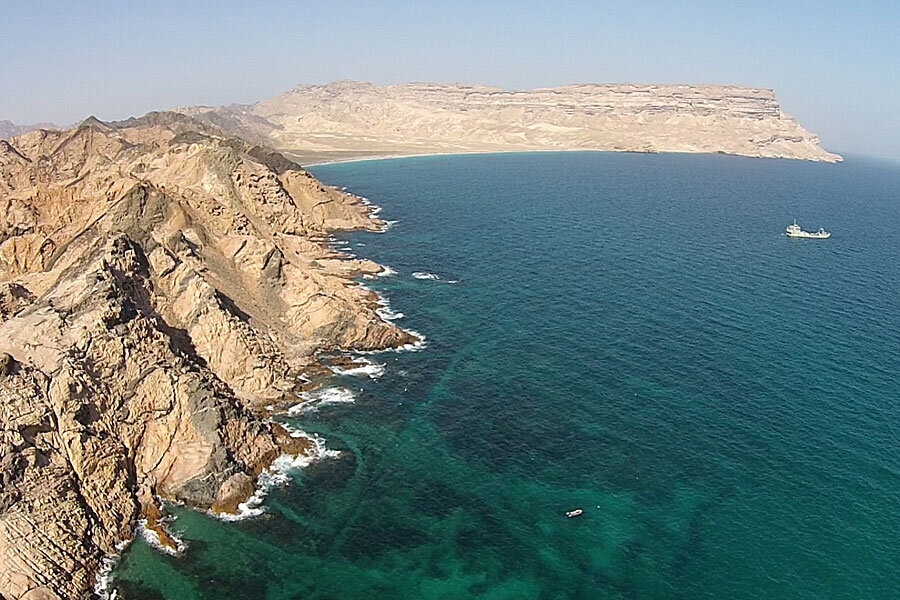Vasco de Gama's ship, rich in treasure and history, is found near Oman
Loading...
Researchers say they have discovered the earliest known shipwreck from Europe’s "Age of Exploration," a ship from the fleet of Portuguese explorer Vasco de Gama named the Esmerelda.
The shipwreck is a treasure trove of historical artifacts, say archeologists. Not only is the ship’s history an intriguing story of piracy, greed, and tragedy, but the wreck can also teach scholars about the Portuguese during their "Golden Age of Navigation."
“There’s a lot to learn from the artifacts after the fully archeological study is completed,” David L. Mearns, whose company, Blue Water Recoveries, excavated the shipwreck, told The Christian Science Monitor in a phone interview. “This collection provides physical, tangible proof of the military power of the Portuguese and how they dominated other countries through their naval power.”
The Esmerelda sailed with de Gama in the early 16th century, from about 1502 to 1503. De Gama is famous for discovering a sea route to India in the last years of the 15th century. His discovery of the route, called the Carreira da India, helped establish Portugal as a dominant trading and military power.
Despite its utility, the Carreira da India was a dangerous route for sailors – about 20 percent of the ships that traveled the route in the first century and a half after its discovery were lost at sea. Prior to the discovery of the Esmerelda, the oldest-known shipwreck discovered in the area was the São João, which wrecked in 1552.
The story of how the Esmerelda came to ruin is a tale of avarice and ignorance. The ship was one of five ships that de Gama left behind in the Indian Ocean under the command of his maternal uncles, Vicente and Brás Sodré.
Although the Sodré brothers were tasked with protecting Portuguese factories on the coast of India, they instead engaged in piracy, raiding Arab ships throughout the Gulf and leaving no survivors.
After months of raids, the five ships took shelter in April by a small island, known today as Al Hallaniyah. When the locals warned the Sodré brothers that their ships were in danger due to an impending storm, the brothers scoffed at their concerns.
The rest, as they say, is history. While one ship, the São Pedro, was washed ashore and much of its crew survived, the Esmerelda’s fate is written in the deep sands off the coast of Al Hallaniyah.
When Mr. Mearns’s team first began researching the shipwreck, he told the Monitor, “We weren’t archeologists. Our skill was with the research.”
The team first conducted historical research in libraries and archives in Europe, primarily in Lisbon, Portugal. They read survivor accounts in order to locate the shipwreck’s location.
Mearns told the Monitor that the team identified two potential sites, but initial investigation at the first site came up empty. At the second site, however, divers found cannonballs that eventually led them to the shipwreck. The Esmerelda was discovered in 1998.
Yet, the team was hamstrung by a lack of funds and experience. “We really thought we weren’t capable of doing it,” Mearns says. “So we postponed it [the excavation] until we found the right teammates, so we could do it the right way.”
The ship was finally excavated in 2013. “We used a grid system to excavate,” said Mearns’s fellow researcher David Parham, “just like an archeological dig on land.” The team used airlifts and suction to remove the sand from the site and push it to one side while they completed the excavation.
According to National Geographic, researchers found over 2,800 individual artifacts at the wreck. These include Portuguese coins (both gold cruzado coins from the reign of Joao II and silver índio coins for trade with India), a ship’s bell cast in 1498, and what appears to be a copper alloy astrolabe bearing the Portuguese royal coat of arms.
According to Dr. Parham, the find is significant for the depth of information it provides about Europe’s involvement in the Indian Ocean.
“This is the earliest European vessel found in the Indian Ocean,” Parham told the Monitor. “It gives us an idea of the level of armaments, information about how the ship was provisioned in Portugal, where it was provisioned on the coast of Africa, and the ships it raided in the Indian Ocean.”
Although the crew undoubtedly perished with the ship, researchers were unable to find human remains, either with the wreck or on the island. It is likely that the climate decomposed the bodies.
By law, artifacts from the shipwreck belong to the Omani government. According to Mearns, the excavation is the first of its kind near Oman, and it carries cultural and historical significance for both the Portuguese and Omani governments, as it represents some of the earliest communication between Europe and Gulf countries like Oman.








